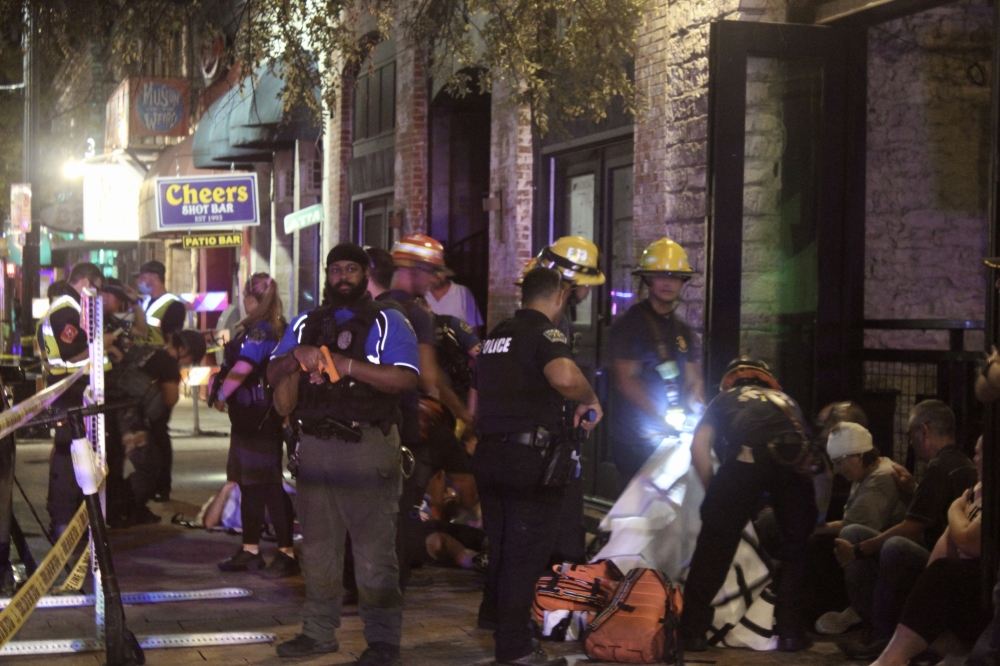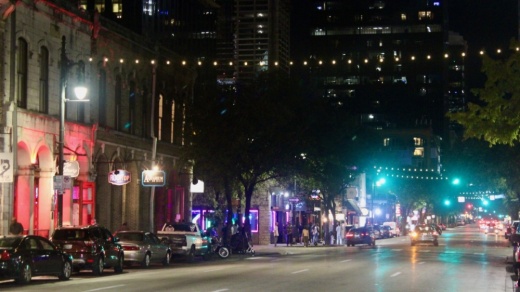The June 12 shooting and other incidents of violence along East Sixth earlier in the year prompted a review of safety in the downtown district and its crowded nightlife and live music scene beginning in the spring. District 9 Council Member Kathie Tovo, whose district includes the Sixth Street entertainment sector, said days after the incident she would be speaking with city staff and first responders to chart a path forward, while other council members called for measures such as increased gun violence enforcement adjustments to EMS and police staffing in response.
Those conversations moved ahead in July when council unanimously backed a Tovo-sponsored resolution outlining new planning and precautions for the Sixth Street entertainment district—defined in the document as the area bounded by Congress Avenue and I-35 between Fifth and Seventh streets.
Citing several previous reports on safety in the area, the resolution referenced the district's multiple recent shootings and often-raucous crowds as creating "the perception of an unsafe and volatile environment" to be examined over a matter of months. Several directives and recommendations were set with successive deadlines of Aug. 30, Sept. 30 and Oct. 30.
While the city did not provide a progress report after the August marker, Police Chief Joseph Chacon and Development Services Director Denise Lucas issued a joint memo Oct. 5 detailing how officials have tackled the council-ordered process so far. Overseeing the process is a new city team made up of representatives from Austin's police, fire, transportation and code departments as well as Austin Energy, the city historic preservation office and Austin-Travis County EMS. The partnership was established Aug. 16.
Among the other actions taken by the Austin Police Department in recent months are the extension of the department's downtown violence intervention program and a large-scale training exercise down the block from the site of the June shooting.

According to the early October update from Chacon and Lucas, the interdepartmental team's work is well underway. The pair provided status reports on nine main directives and said further action and information can be expected this fall.
One of the most visible recent changes comes from council's ask for "dramatically brighter spaces" in the area. In response, Austin Energy has upgraded 64 streetlights in north-south streets and alleyways off Sixth and is moving ahead with a lighting study that could bring wholesale changes to lighting along the corridor. The team is also speaking with business owners about the lighting issue and whether outdoor barriers or seating areas could improve the flow of crowd traffic during peak weekend hours.
Big-city nightlife strategy both nationally and abroad could also inform Austin's next steps. The city team's first months of work included conversations with other cities about their handling of safety in entertainment districts. With several contacts in the books, Chacon and Lucas said perspectives from officials in New York; Las Vegas; San Francisco; Seattle; Orlando; Arlington, Virginia; and Sydney, Australia will be shared with council.
A search for a location to use as a public safety staging area is also in progress. The need for a dedicated post where EMS and other first responders can gather along Sixth was highlighted in the wake of the June shooting by Austin EMS Association President Selena Xie, who said the absence of such a site leaves downtown vulnerable given delayed response times and difficulties navigating ambulances and staff through chaotic crowds.
"Austin was actually very lucky that there were not more casualties," Xie said in June.
While a staging area has not yet been identified, officials said planning is underway and that the location will house a new rescue task force of EMS and Austin Fire Department medics and APD officers to "get to, treat and extricate patients" when needed. Separately, the city may also explore a licensing program that could require staff at local businesses to go through safety training to improve coordination between employees and first responders.
The regular influence of alcohol along the corridor was also put in focus with council asking staff to review whether underage drinking remains an issue there—the team found that it does—and to work with the Texas Alcohol and Beverage Commission to cut down on the number of under-21-year-olds showing up on weekends. Officials said a joint APD and TABC effort on Sept. 2 did target underage drinkers and fake IDs, and the two agencies will collaborate in the future on similar work.
Chacon and Lucas said progress updates for many of the items being pursued by the safety partnership will be brought to City Council later this month. The final deadline set in council's resolution also directs the relevant departments to start crafting a "nightlife management plan," review their responses to mass-casualty incidents and consider whether reopening the corridor to vehicle traffic on weekends could be a positive change—a more divisive concept on the council dais when it was floated over the summer.
The team is also tasked with speaking to property owners about land use along the strip presently dotted with bars, clubs, music venues and eateries, and whether new regulations might bring "more diverse uses" to the street. Another report to council is expected by the end of the month.
"Staff continues collaborating to address the elements outlined in this resolution and looks forward to providing updates on progress," Chacon and Lucas said.





